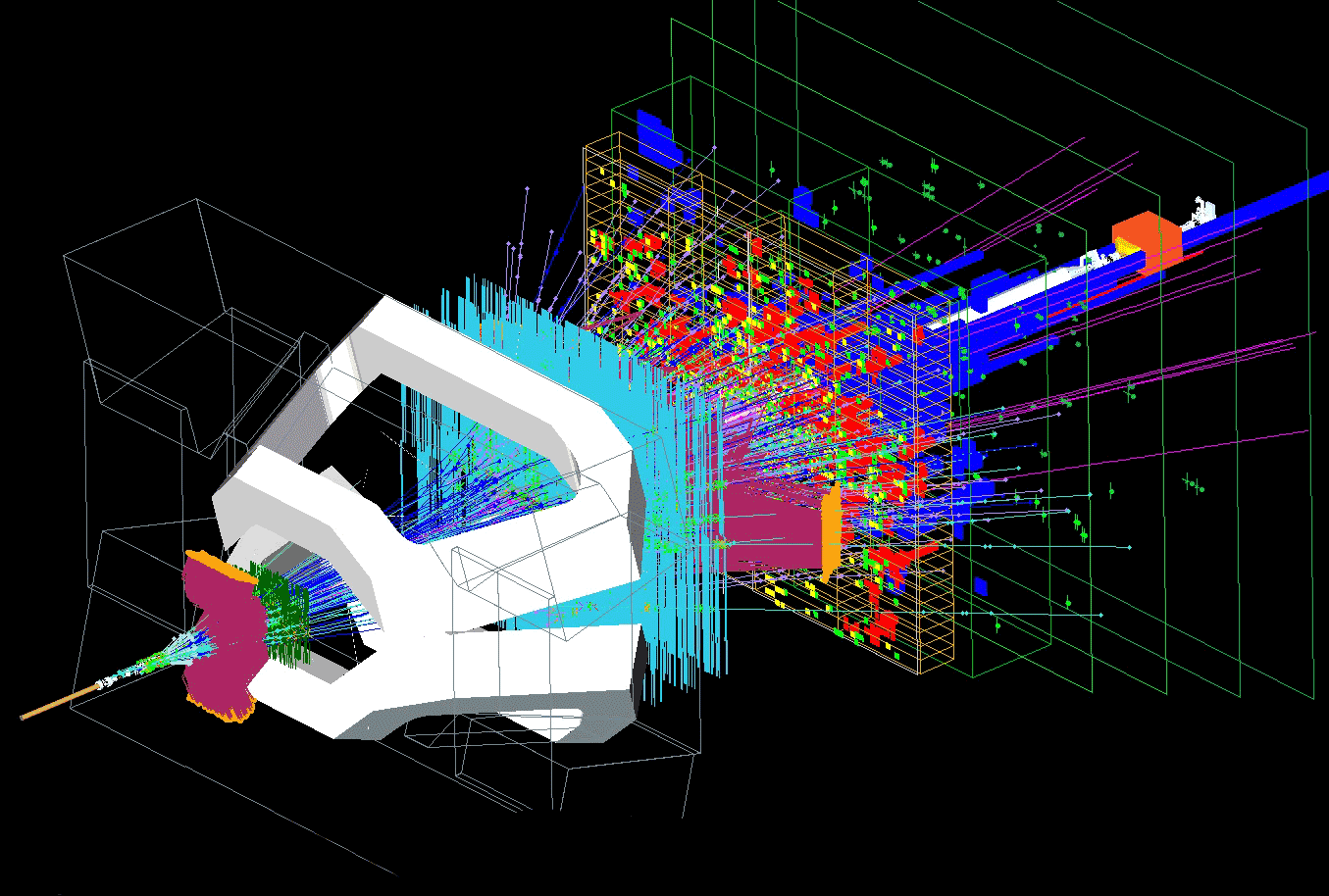During the recent lead-proton run at the Large Hadron Collider (LHC), the Large Hadron Collider beauty (LHCb) experiment took data from collisions between protons and ions for the first time.
LHCb is an asymmetric detector designed to study matter-antimatter asymmetries and rare decays involving heavy quarks. Though LHCb is small compared to the multipurpose detectors CMS and ATLAS and the specialized heavy-ion detector ALICE, it has something special: the location of LHCb close to the collision point allows it to identify particles that scatter at very small angles from collisions.
“The detector's unique angular coverage will enable us to study strange, charm and also beauty quark production in regions not accessible to the other experiments,” says LHCb spokesperson Pierluigi Campana.
LHCb does not take data during ion-ion runs – each collision between ions can generate so many secondary particles that it becomes difficult for the subdetectors to withstand the particle flux. Managing the complex harvest of information is a further challenge.
But from the perspective of LHCb, the difficulty of detection work during the proton-ion run is not so different from what they usually manage during the normal proton-proton operation. “For LHCb, the hybrid beam configuration is almost as manageable as the proton-proton one,” says Campana. “This applies both to the detector and the trigger and to offline systems."
A few dedicated groups within the LHCb collaboration are now analysing data from the proton-ion run. The first results should be available by summer. Stay tuned.

